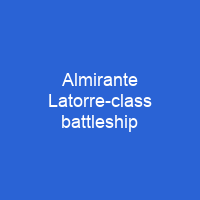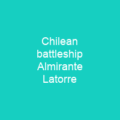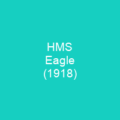Chile’s Naval Ambitions: A Tale of Two Battleships
Imagine a world where nations compete not just on land but also at sea. This was the reality in South America during the early 1900s, as Chile and Argentina engaged in a naval arms race that would shape their destinies for decades to come.
The Fierro-Sarratea Treaty: A Peaceful Resolution
But let’s rewind. In 1878, the Fierro-Sarratea treaty was signed between Chile and Argentina, marking a peaceful resolution to their long-standing border dispute in Patagonia. However, this peace was short-lived as both nations soon found themselves back at the drawing board, this time with ships rather than borders.
The Dreadnought Race: A Battle of Titans
From 1890 to 1895, Chile and Argentina alternated cruiser orders, each trying to outdo the other. But it was Brazil’s order for two dreadnoughts in 1902 that truly set off the dreadnought race. Argentina responded by ordering its own dreadnoughts from Italy, while Chile delayed its plans due to an earthquake and financial depression.
Chile’s Naval Orders: A Bid for Supremacy
In 1904, Brazil began upgrading its navy with the purchase of dreadnought ships from the UK. This prompted Argentina and Chile to cancel their armament-limiting pact and order new warships. The United Kingdom won the bid for the two dreadnoughts, but the US made a push to land the contract in an American shipyard.
The Almirante Latorre class consisted of two super-dreadnought battleships designed for the Chilean Navy. They were intended to compete in the South American dreadnought race but were purchased by the Royal Navy before completion. One was completed as a battleship, while the other was converted into an aircraft carrier.
The Almirante Latorre: A Tale of Two Ships
Almirante Latorre, another Chilean ship, was renamed HMS Canada when sold to Britain and commissioned into the Royal Navy. It saw action in the Battle of Jutland in 1916 and served until it was put into reserve in March 1919.
After World War I, Chile sought additional ships from the UK but was worried about destabilizing South America due to a potential naval arms race. The British offered Almirante Cochrane for reconstruction as a battleship, but decided to complete it instead, building HMS Eagle.
HMS Eagle, originally the Chilean ship ‘Almirante Cochrane,’ was purchased by the British in 1918 and converted into an aircraft carrier. It served in the Mediterranean Fleet and on the China Station before being sunk in 1942 during Operation Pedestal.
Modernization and Mutiny: The Almirante Latorre’s Journey
Almirante Latorre underwent modernization in 1929 before returning to Valparaíso, where crew members eventually instigated a major mutiny on board in 1931. The revolt was a result of economic woes during the Great Depression and a recent pay cut.
The ship remained active until 1951 when it was decommissioned after a crew accident. It was sold for scrap in Japan in 1959, marking the end of an era that began with dreams of naval supremacy but ended with the realities of economic constraints and political upheaval.
Almirante Latorre’s Specifications: A Glimpse into Its Might
Almirante Latorre closely resembled the British Iron Duke class, with differences including a longer length, less forecastle, more quarterdeck, larger funnels, and an aft mast. The ship had ten 14-inch guns and was 28,100 tons at standard load. They were able to depress to −5° and elevate to 20°.
The secondary battery consisted of 16 6-inch guns, two 3-inch anti-aircraft guns, four 3-pounders, and four submerged torpedo tubes. Powered by steam turbines, the ship had a maximum speed of 22.75 knots. It had a 9-to-4-inch belt armor and could carry 3,300 metric tons of coal and 520 metric tons of oil.
The Legacy of Almirante Latorre
From the Fierro-Sarratea treaty to the dreadnought race, from the Battle of Jutland to the Great Depression, the story of Almirante Latorre is a testament to the complex interplay of politics, economics, and military strategy in South America. It serves as a reminder that even in the face of technological advancements and international cooperation, the spirit of competition can drive nations towards significant investments in their navies.
The Almirante Latorre class may have been just two ships, but they played a crucial role in shaping the naval landscape of South America. Their journey from Chilean pride to British service and back again is a fascinating tale that continues to intrigue historians and enthusiasts alike.

You want to know more about Almirante Latorre-class battleship?
This page is based on the article Almirante Latorre-class battleship published in Wikipedia (retrieved on November 29, 2024) and was automatically summarized using artificial intelligence.







